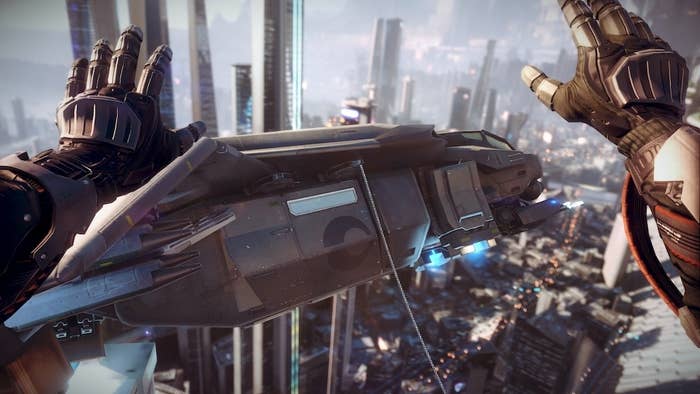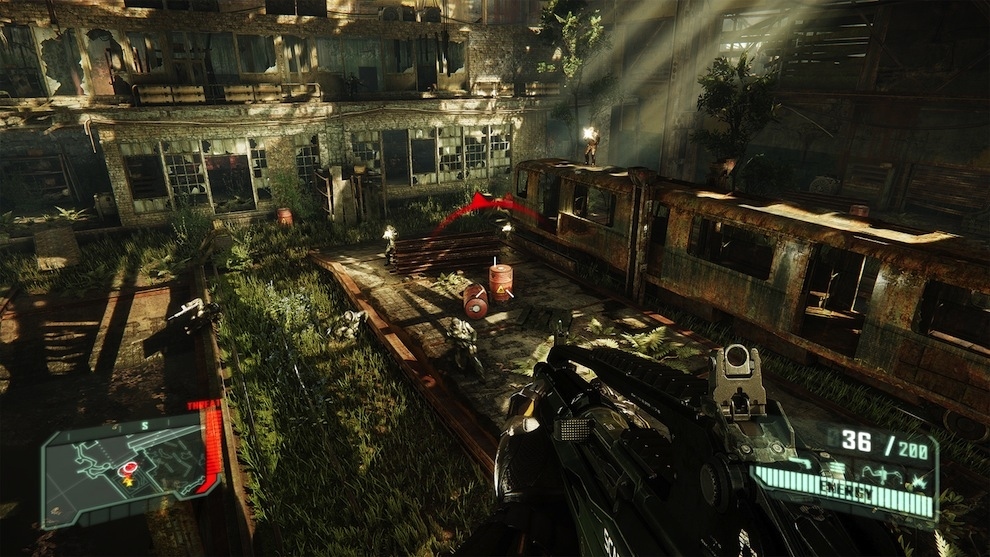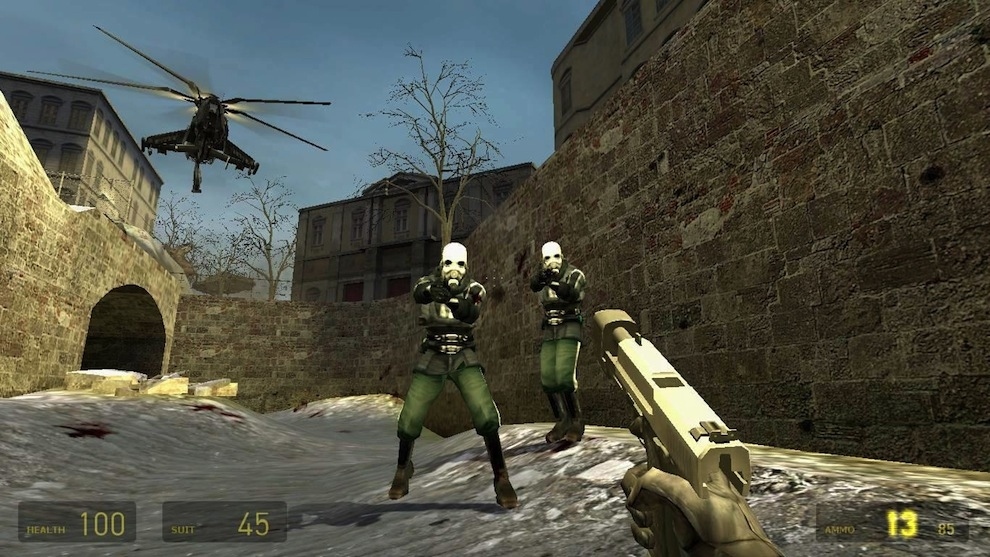
Minutes after Sony debuted footage from the PlayStation 4 last Wednesday, a debate began on Twitter. At issue: Did the graphics on display appear to be a significant enough improvement on current console visuals to be considered "next-generation"? Opinions were split:
Impressive showing by Sony. Clearly the next leap isn't really in graphics. Some very cool social features for PS4.
 Impressive showing by Sony. Clearly the next leap isn't really in graphics. Some very cool social features for PS4.-- Stephen Totilo
Impressive showing by Sony. Clearly the next leap isn't really in graphics. Some very cool social features for PS4.-- Stephen Totilo
PS4's graphics are good but not mind-blowing vs a good PC. The real innovation seems to be quality of life perks for devs and players alike.
 PS4's graphics are good but not mind-blowing vs a good PC. The real innovation seems to be quality of life perks for devs and players alike.-- Jeremy Parish
PS4's graphics are good but not mind-blowing vs a good PC. The real innovation seems to be quality of life perks for devs and players alike.-- Jeremy Parish
Never In My Life Seen Graphics on this level, The Functionality of #PS4 is beyond amazing, #Sony Is In The Zone Excellent Presentation
 Never In My Life Seen Graphics on this level, The Functionality of #PS4 is beyond amazing, #Sony Is In The Zone Excellent Presentation-- hiphopgamer
Never In My Life Seen Graphics on this level, The Functionality of #PS4 is beyond amazing, #Sony Is In The Zone Excellent Presentation-- hiphopgamer
Still feels like I dreamt all that PS4 stuff. Some of those visuals were astounding.
 Still feels like I dreamt all that PS4 stuff. Some of those visuals were astounding.-- Steven Pick
Still feels like I dreamt all that PS4 stuff. Some of those visuals were astounding.-- Steven Pick
New consoles used to mean enormous advances in visual quality. Think about the difference, say, between Super Mario World and Mario 64. That last week's debate happened at all testifies to a simple fact of geometry: As game developers slather on more and more polygons, graphical returns start to diminish.

But this conversation also wonderfully encapsulated the weird mix of subjectivity and objectivity that goes into talking about game graphics. On the one hand, graphics are quantitative products of computer engines, a direct function of processing power: Shouldn't spotting "next-generation" visuals be as easy as agreeing on the game that renders the most polygons in the most sophisticated way? On the other hand, graphics are visual tools that rely on the creativity of the programmer/artist to arrange, which we evaluate based on our personal standards of quality. In this case, there can be as many definitions of "good" or "next-generation" graphics as there are individual tastes. (For a good rundown of a closely related debate, check out the conversation between Evan Lahti and Tyler Wilde at PC Gamer.)

Of course, a full account of what "good graphics" are has to take both into consideration.
Take two visually remarkable games that have come out in the past two weeks; they couldn't be more different. The first is Crysis 3, a multimillion-dollar first-person shooter from the German house Crytek, which has assumed the fragile mantle of "best game graphics ever." (To get a sense of the fanaticism with which Crytek pursues something game writers have been calling "visual fidelity," watch this short segment from Kill Screen and the Creator's Project.) The other game is called Year Walk, a small independent title from the Swedish developer Simogo. It's a short, creepy, first-person adventure based on the old Scandinavian custom of the hallucinogenic evening constitutional (yep). You can beat it in an hour.
Here's another difference between the games. In 10 years, Crysis 3 will look dated, at best. In 10 years, Year Walk will look as good as new. And yet no one would argue that Year Walk has "better" graphics than Crysis 3.

The difference is art direction. The creators of Year Walk have accepted obvious visual constraints (a limited color palette, a limited depth of field, a static first-person perspective) and worked within those constraints to build a distinct and unforgettable aesthetic. Yet, ironically, the game doesn't look "limited" at all. Just the opposite — it looks purposeful and coherent. Crysis 3 looks unbelievably impressive. And yet the outstanding elements of its visual composition (grass that sways believably, shadows that dance hypnotically, desiccated Manhattan skyscrapers) will all undoubtedly be improved upon in the years to come, probably by Crytek itself. And by pushing in the most literal fashion for visual fidelity, Crysis 3 also reminds us of what it isn't: actual footage, real life. That effect will only be magnified with time, which is why Crysis 3 will probably occupy the same place on your shelf that Madden 2011 does today.
Don't believe me? The first game made based on Crytek graphics was called Far Cry. It came out 10 years ago and was heralded as having the most advanced graphics in history. It looks like this:

Half-Life 2 also came out in 2004. It looks like this:

No one in 2004 would have argued that Half Life 2 had a more capable graphics engine than Far Cry. And yet it undoubtedly looks better today. The reason is that Valve is the rare major game developer that understands aesthetics as well as it does tech. The very best game graphics happen when technologically sophisticated developers pursue an aesthetic vision and not a technological extreme.
This is why the next maturation of game graphics isn't about processing power, and it isn't about pure aesthetic sophistication. It's about making it feasible for artists as talented as the ones as Simogo to use tools as sophisticated as the ones made by Crytek. Imagine the lasting quality of games that could be made if developers like PlayDead (Limbo) and Team Meat (Super Meat Boy) had easy and affordable access to, say, a dumbed-down version of the CryEngine. Fender made the Stratocaster; Hendrix made it immortal. JL Mott made the toilet; Duchamp made it art. It's always unreasonable to expect the manufacturer to be the best at using its product.
Isn't that the lesson our technology has been teaching us for the past 20 years?
